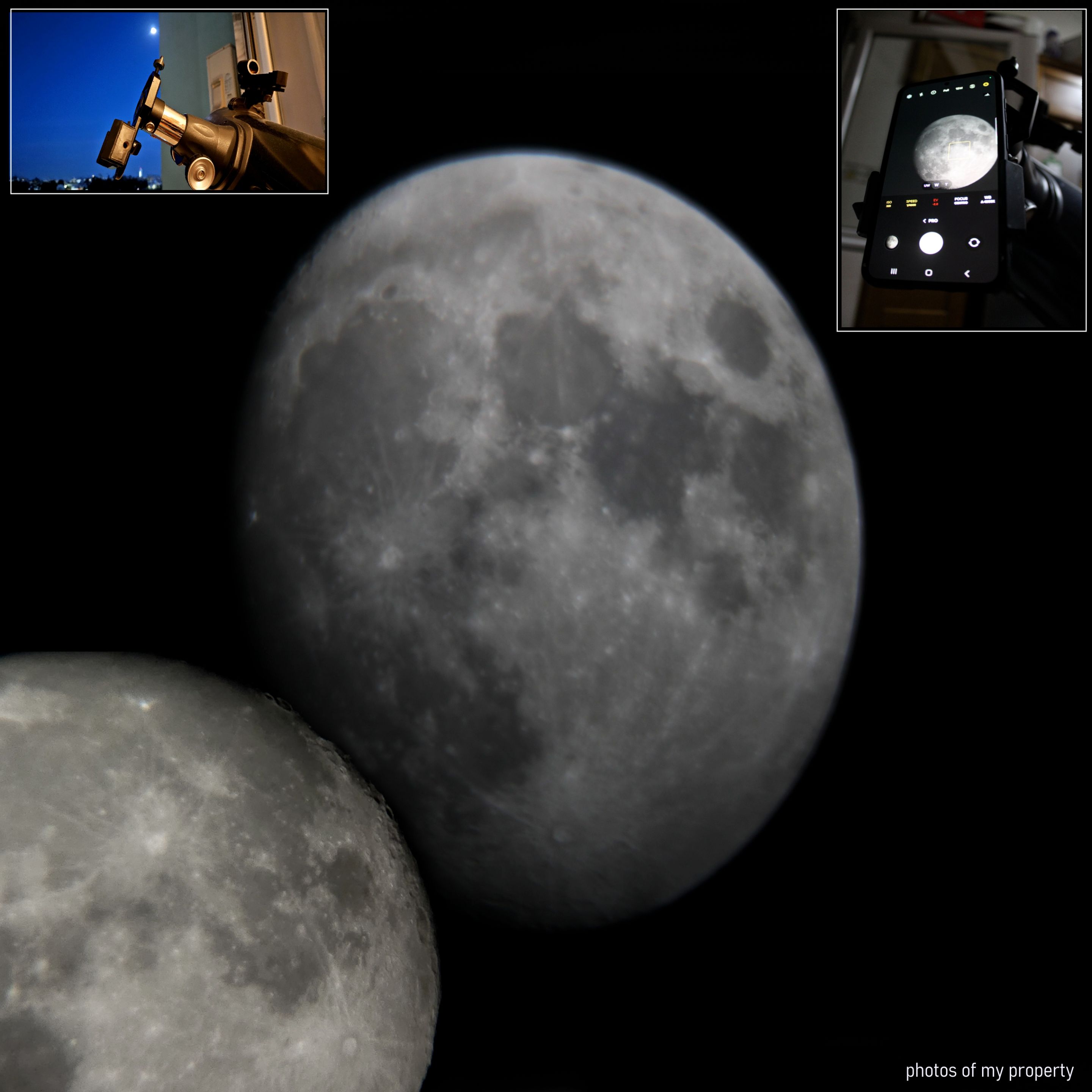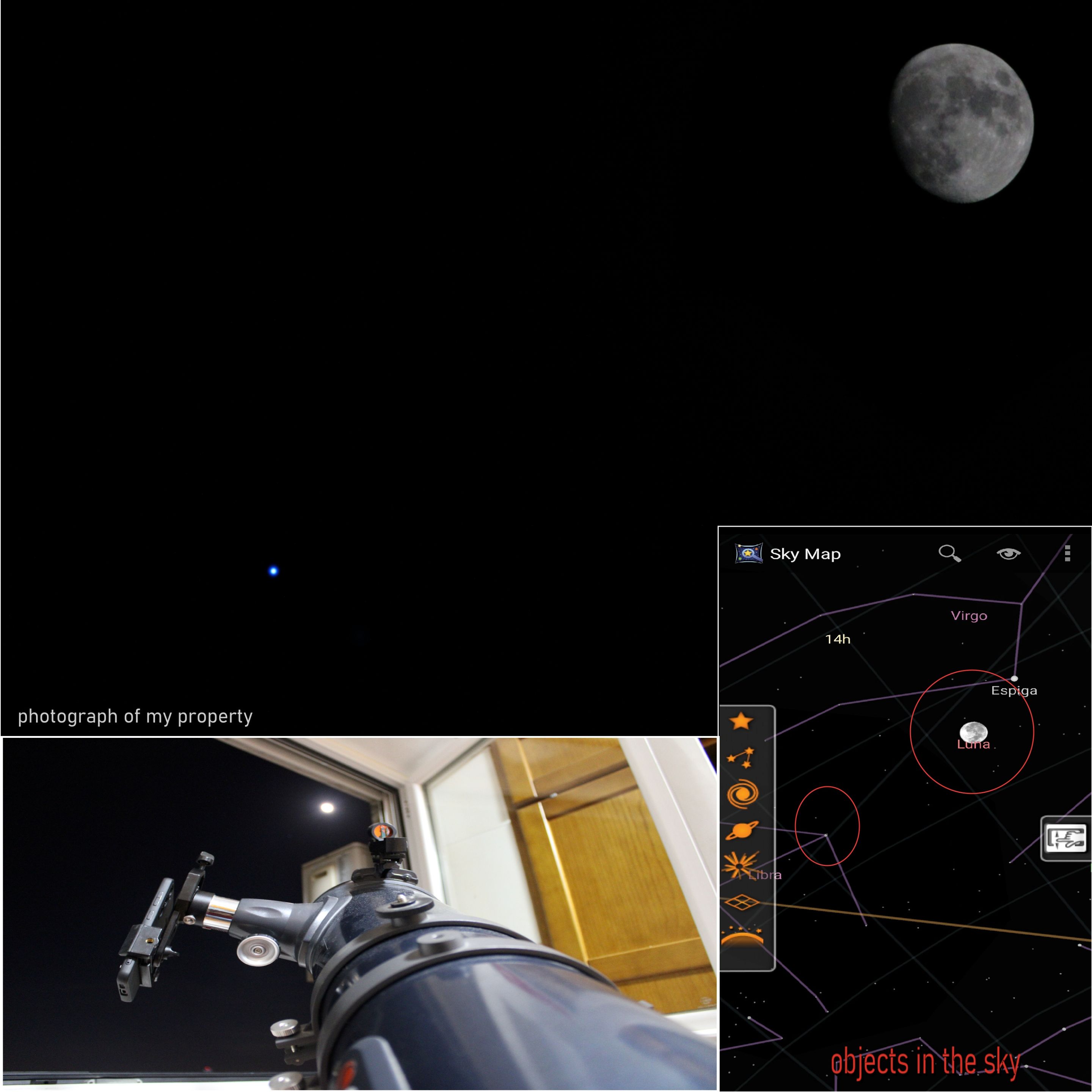Good morning, science and astronomy lovers! While looking at the sky, I noticed that on this date (05/08) there was a star very close to the moon that stood out for its great brightness in the night sky. This led me to consider doing a small study of that star using the tools I have on hand, with the help of my Astromaster telescope and some accessories to install my Canon camera and my phone. We are going to see in detail the moon, the mysterious star that is close to it.🔭🌍
¡Buenos días, amantes de las ciencias y la astronomía! Mientras miraba al cielo observe que para esta fecha (08/05) había una estrella muy próxima de la luna que se destacaba por su gran brillo en el firmamento nocturno, esto me llevo a considerar hacer un pequeño estudio de esa estrella utilizando las herramientas que tengo a mano, con ayuda de mi telescopio Astromaster y algunos accesorios para instalar mi cámara Canon y mi teléfono vamos a ver con detalles la luna, la estrella misteriosa que está próxima de ella.🌌🪐🌓
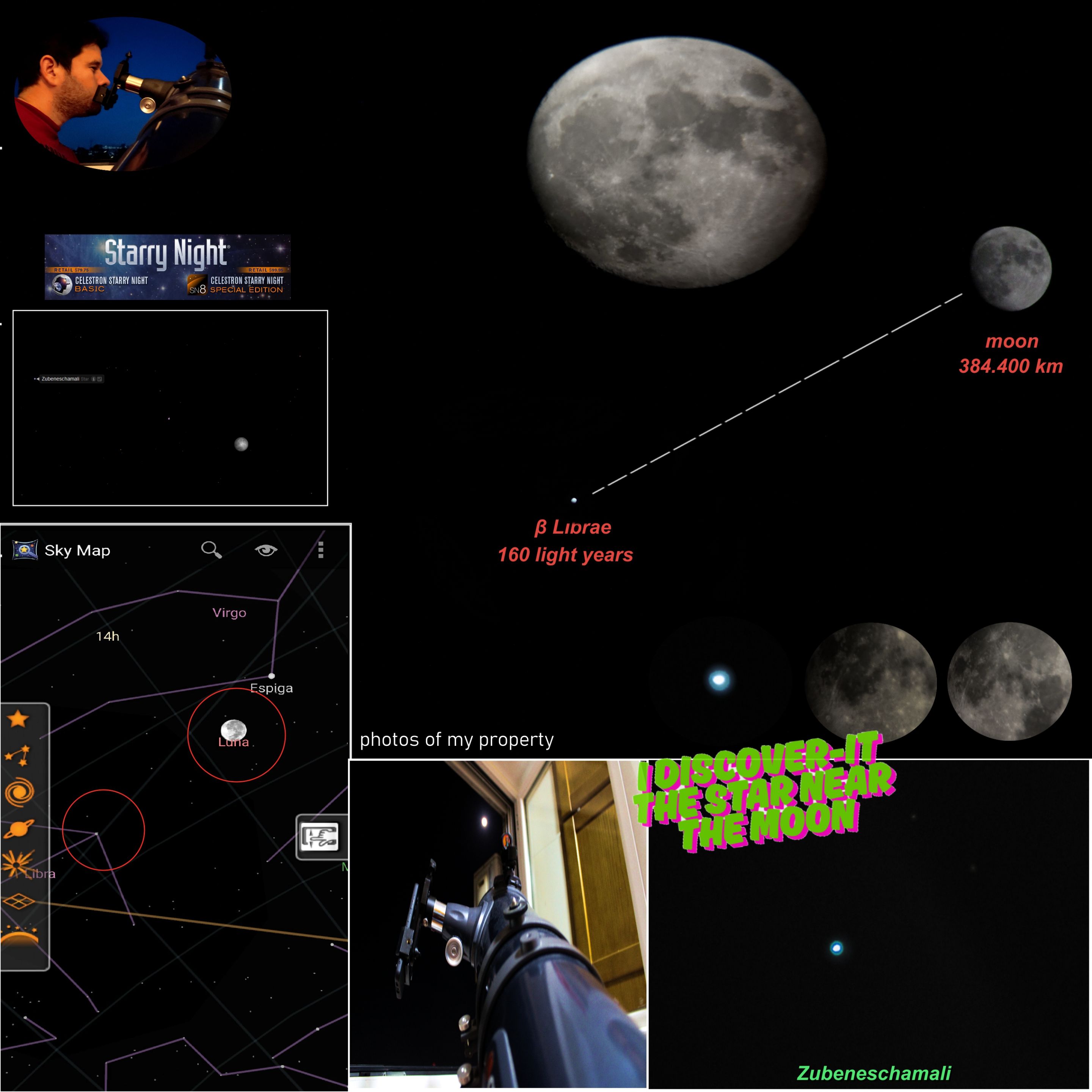
What does it tell us: (starry night celestron)🔭👨🏻🎓 / Que nos dice: (starry night celestron)📕🪐

The first thing I did was use my program https://www.celestron.com/pages/celestron-starry-night-software?srsltid=AfmBOop3kapScfKNaDpo7XPvnL_km2xdcJThIeGPaYesos_lay3qd5s9 that came with a free license when I purchased my telescope, it is a very useful software, because it helps me a lot to locate stars or objects in the sky with it I determined that our "mysterious" star is part of the constellation of: (LIBRA), it is also practical to use SKYMAP I always use skymap to locate a constellation and Starry to know the exact name of the star, we already finished that our brightest star next to the moon is nothing more and nothing less than: (Zubeneschamali or β Librae) the beta star of the Libra constellation.🔭🌓
Lo primero que hice fue utilizar mi programa https://www.celestron.com/pages/celestron-starry-night-software?srsltid=AfmBOop3kapScfKNaDpo7XPvnL_km2xdcJThIeGPaYesos_lay3qd5s9 que me vino con licencia gratis cuando adquirí mi telescopio, es un software muy útil, pues me ayuda bastante a ubicar estrellas u objetos en el cielo con él fue que determine que nuestra estrella "misteriosa" forma parte de la constelación de: (LIBRA), también es práctico usar SKYMAP yo siempre utilizo skymap para ubicar una constelación y Starry para conocer el nombre exacto de la estrella, ya terminamos que nuestra estrella mas brillante al lado de la luna es nada mas y nada menos que: (Zubeneschamali o β Librae) la estrella beta de la constelacion de Libra.🌍📕

What is Zubeneschamali?🔭👨🏻🎓 / Que es Zubeneschamali?📕🪐
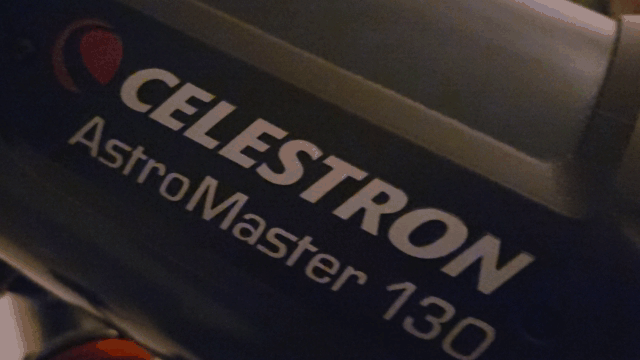
This is an example of how the same photo taken with a high-end phone and one with a telescope would look, there are many differences in both the detail of the moon and the details of the star (β Librae) and we can even see its brightness and natural color, let's explain a little about what it is: (Zubeneschamali), we are in the presence of the brightest star in the constellation of Libra with a magnitude of +2.61, it makes sense and for this reason it is seen in the sky when the moon is full, which normally in this period it is not recommended to look for deep objects, its name has Arabic origin.🌍🌓
Este es un ejemplo de como se vería la misma foto tomada con un teléfono de alta gama y una con el telescopio, hay muchísimas diferencias tanto en el detalle de la luna como los detalles de la estrella (β Librae) e inclusive podemos ver su brillo y color natural, vamos a explicar un poco de que se trata: (Zubeneschamali), estamos en presencia de la estrella más brillante de la constelación de libra con una magnitud de +2,61 tiene sentido y por ello se ve en el cielo cuando la luna está llena que normalmente en este periodo no se recomienda buscar objetos profundos, su nombre tiene origen arabe.🪐👩🏻🏫👨🏻🎓

As I always say, I don't have a super telescope, but by editing and using filters we get good details in my photos! Everything you see there is super edited... Here we have the photo with the longest range of β Librae, using the 55mm lens of my canon adapted to the telescope, it is located at a distance of 160 light years from the solar system. It has a "B8V spectral type frequency" according to Wikipedia: "they are stars that appear white-blue in color, but this star was recently described as green, according to it is also possible to see it in this color with the naked eye, but I couldn't get it, I suppose because I'm in the city, it has a luminosity of 130 times more than our sun. It has a temperature of 12,000 K, its age has been estimated at 100,000,000 years.🌓🪐
¡Como siempre digo, no tengo un supertelescopio, pero haciendo unas ediciones y con filtros conseguimos buenos detalles en mis fotos! Todo lo que ves por allí está supereditado... Aquí tenemos la foto con el mayor alcance de β Librae, usando el lente de 55mm de mi canon adaptado al telescopio, se ubica a una distancia de 160 años luz del sistema solar presenta una frecuencia "tipo espectral B8V" según wikipedia: "son estrellas que aparentan un color blanco-azul, pero esta estrella recientemente fue descrita como verde, segun tambien es posible verla de este color a simple vista, pero yo no conseguí supongo que porque estoy en la ciudad, tiene una potencia de luminosidad de 130 veces más que nuestro sol. Tiene una temperatura de 12 000 K, se ha estimado su edad en los 100,000,000 de años.👩🏻🏫🌍📕

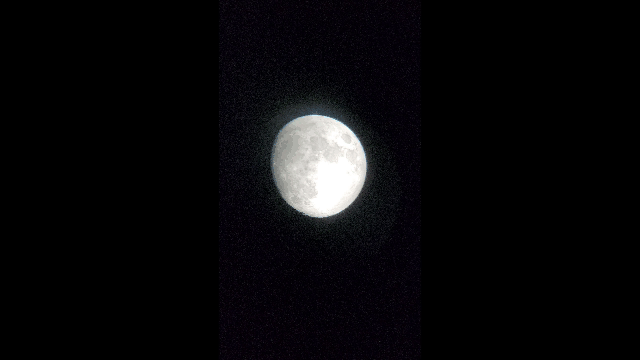
The Moon is currently located 404,878.79 km from Earth and is 99% luminous. It's almost at its full moon phase, which isn't the best time for photography because it's very bright. However, we can see some details using filters, such as craters. So far, we've learned about the bright star closest to our natural satellite, Alpha Libra. We've also learned about it in detail, and now we can admire the Moon.🌓
La luna hoy está ubicada a 404 878,79 km distancia con la tierra y tiene un 99% de luminosidad y está casi en su fase, "luna llena" no es el mejor momento para hacer fotografías porque presenta mucha luz, sin embargo, podemos ver algunos detalles utilizando filtros como los cráteres. Hasta ahora aprendimos sobre la estrella brillante que está más próxima de nuestro satélite natural y se trata de la alfa de libra, también aprendimos sobre ella con detalles y ahora podemos admirar la luna.👨🏻🎓
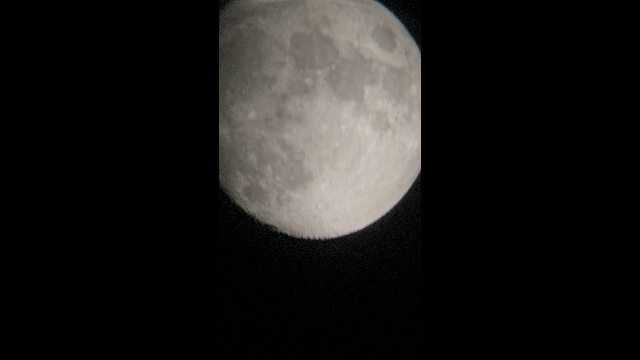 *GIF of my property recorded with the telescope*
*GIF of my property recorded with the telescope*

How Skymap works🔭👨🏻🎓 / Como funciona Skymap?📕🪐
Here's another beautiful photograph of how the star Zubeneschamali looks very close to the Moon. This isn't always the case, depending on the Moon's rotation and the month of the year. The Moon has other stars or planets closer, so everything changes. As you can see, the SkyMap app on your phone allows you to view any object of interest in the sky, including all the constellations. The only problem is that it doesn't tell you which star you're observing. Therefore, after locating the constellation, "Starry Night Celestron" comes into play.🌓📕
Aquí tenemos otra hermosa fotografía de como se ve la estrella Zubeneschamali muy próxima de la luna, esto no siempre es asi dependiendo la rotación y el mes de año la luna tiene otras estrellas o planeta más próximos o sea todo va cambiando. Como puedes ver en la app del teléfono skymap permite ver cualquier objeto en el cielo de interés, inclusive todas las constelaciones, el único problema es que no nos dice cuál estrella estamos observando... Por ello, luego de localizar la constelación es que interviene "starry night celestron".👩🏻🏫🌍

Other photo of the moon🔭👨🏻🎓 / Otra foto de la luna📕🪐


THANKS FOR READING ME (PHOTOS AND VIDEOS OF MY PROPERTY) / GRACIAS POR LEERME FOTOS Y VIDEOS DE MI PROPIEDAD🙂🧠🦾👍








